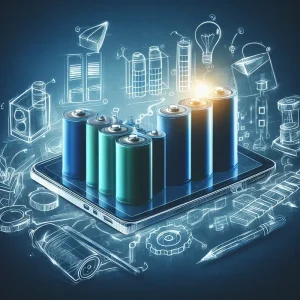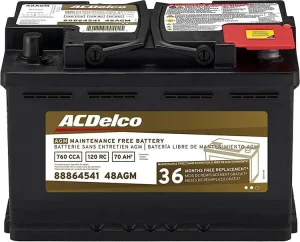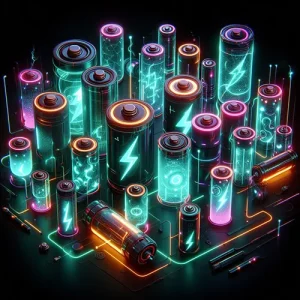– How battery technology has changed –
Most people in the United States will know of Benjamin Franklin for his role as a Founding Father. He was among those who drafted and signed the United States Declaration of Independence. His face is said to be staring out from some 10 billion or more US$100 notes currently in circulation around the globe. He was never President of the United States of America.

Perhaps less well known is that he was also an inventor and scientist, and in 1748 ir reputed to have been the first person to use the words “electrical battery” while experimenting with electricity.
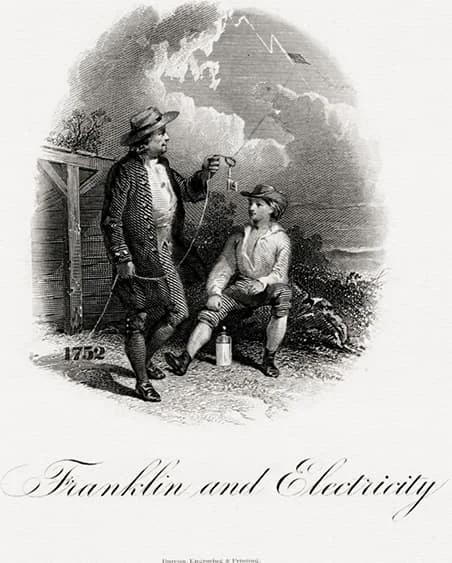
But it was not until 1800 when the Italian physicist and chemist Alessandro Volta produced the first real battery, using copper and zinc discs stacked together and placed in salted water.

A little more than half a century later, in 1859, the French physicist Gaston Planté invented the lead-acid battery. This was a revolution in portable electricity, being the first ever rechargeable battery, and one which was able to supply high surge currents.

different types of battery
Batteries are generally classified as either primary or secondary. Primary batteries are those which have a single use. They are usually small and inexpensive, and discarded (safely) once they are discharged. There are three types of which the usually more expensive alkaline battery is probably the most well known mainly because of how long they last. Take a look around your home and begin to appreciate how prevalent primary batteries are and how they have become an indispensable part of our daily life.
The second category concerns the more expensive rechargeable batteries, including the lead acid battery. This sort of battery is designed to restore the original chemical conditions of the cells by a process of external charging. For example, in the case of a vehicle this is done by the alternator.
the lead acid battery
The lead-acid battery, first in its wet-cell form and later in the maintenance-free sealed variety, has remained predominant to this day because of its high surge current and relative cheapness to manufacture. You can find large-format variations of the lead-acid battery being widely used as back-up power supplies, many in critical areas of operation such as control towers at airports, in hospitals, as well as in military installations. But most of the lead acid batteries like the one shown here continue to be produced for vehicles.
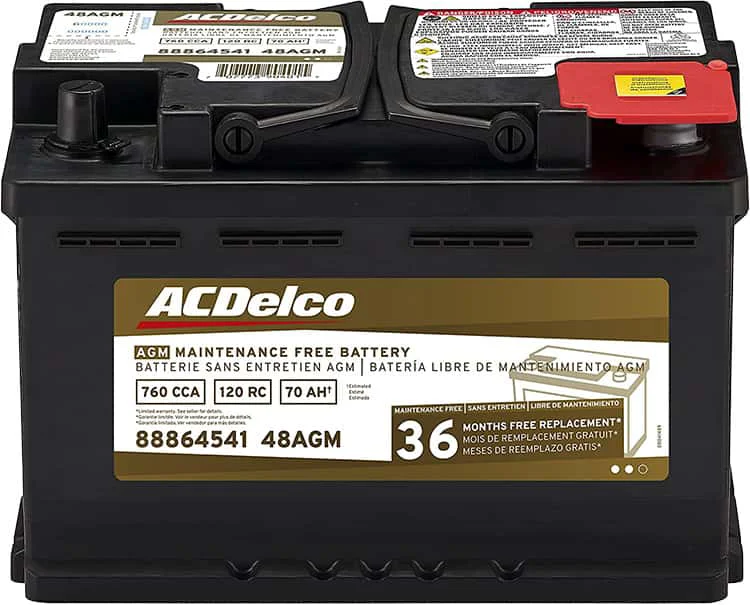
problems associated with the lead acid battery
For all their merits, lead acid batteries do have their problems. They are very heavy, need long charging times, they contain a lot of lead and the highly corrosive sulfuric acid. Both lead and acid can be extremely harmful, and even fatal, to health if not handled with due care. For example, if the batteries are dumped in landfills the lead they contain can eventually contaminate groundwater used in water supplies, resulting in lead poisoning of the nearby population and causing long-term health issues.
Unfortunately, in many parts of the developing world automobile batteries are recycled in poor and uncontrolled conditions to retrieve the valuable lead, which is then melted down for re-use. This recycled lead is used in a variety of products such as the manufacture of ammunition, in radiation shielding products, and cable sheathing. It is also widely used in roofing because of its resistance to corrosion as well as its excellent sealant properties and ability to be molded around difficult shapes.
Although lead can be highly toxic when mishandled, it is one of those metals that can be melted down and used again and again indefinitely. So, if handled with the right precautions, battery recycling can paradoxically be beneficial for the environment.
the future of the lead acid battery
This type of battery will remain dominant in specific areas and particularly so in most of the automobile and vehicle industry. This is because, although Lithium-ion batteries can be recharged many times, alternators are not designed to charge them. For this to change we may have to wait until electric vehicles and charging points become much more available.
This scenario may not in fact be too far away. Increasing evidence of climate change is pushing governments to take collective action to try to limit its impact on the environment, and vehicle manufacturers are racing to produce viable models that are within the purchasing power of most people.
Though many governments may be doing this voluntarily it is also probably a response to cities around the world imposing deadlines on when the sale of vehicles powered by gasoline or diesel will no longer be allowed. For example, Rome and Amsterdam are just some of the cities in Europe that have announced plans to ban combustion engine cars by 2030, and California aims to ban the sale of new gasoline-fueled passenger cars and trucks from 2035.
nickel-cadmium (NiCd) and nickel-metal hydride (NiMh) batteries
Nickel-Cadmium batteries go back to 1899 and competed with lead-acid batteries. Although small units were in use, it was only in 1946 that the US began to produce larger varieties. Over the years NiCd became the standard against which other technologies were judged. While they remain in use in a variety of applications today, from power tools to medical equipment, they have been largely superseded by NiMh batteries.
Although NiCd offers some benefits that include long shelf life, safe transportability, low price, and an ability to work in rigorous conditions, cadmium is an especially toxic metal which is environmentally unfriendly. On the other hand, NiMh batteries, which have become better and better since the late 1980s, do not contain toxic materials. But the problem is this type of battery does not have the same endurance. Nevertheless, it has become more common in many applications even though it too is seen as just an interim step to greater use of battery technologies based on lithium.
lithium-ion (li-ion) and lithium-ion polymer (li-ion polymer) batteries
It was not until 1985 that the first commercially viable and prototype lithium-ion battery was produced in Japan. Thereafter it took another six years before Sony brought this new type of battery to the market. The technology once again revolutionized batteries and they are now ubiquitous particularly in the world of electronics owing to their light weight, high energy density and low maintenance. The batteries can be recharged repeatedly without the “memory-effect” that under certain conditions affects Nickel-Cadmium and Nickel–Metal Hydride rechargeable batteries, causing them to hold a reduced charge over time.
But lithium batteries have gained some notoriety because of several high-profile cases where they have caught fire. One you may remember is that of the Samsung Galaxy Note 7, which was withdrawn from market in late 2016 at a cost to the company of some US$3 billion following fires and explosions, and which led to airlines to ban them from flights. Certain restrictions remain on the transport of lithium batteries by airlines because of their volatility.
the geopolitical problems associated with lithium-ion
There are geopolitical difficulties as well because the technology also uses cobalt, a mineral classified as strategic by the US government, and which is vital especially to their aerospace and defense industries. China holds most of the world’s reserves of this mineral, which could present supply difficulties in the future depending on how US relations with China develop as we go forward.
Cobalt is also produced in the Democratic Republic of Congo (ex-Zaire) where there is considerable evidence of child labor being used in its extraction, and that the income from exports have been used to promote regional armed conflict.
lithium-ion polymer (li-ion polymer)
An adaptation of the Li-ion battery is the Li-ion Polymer technology which nowadays is found mostly in mobile phones. While it is more rugged, is much thinner and flexible, and will not catch fire, this technology has its downsides. For instance, it has reduced recharge cycles and is both more difficult and expensive to manufacture, though the technology continues to improve.
the future of battery development looks bright
Although we take them for granted nowadays, it is hard to imagine a world without batteries. They are everywhere, in different formats, sizes and technologies. They are so prevalent that some people have suggested that until fairly recently the incentives to make significant advances in battery technology have been few and that as a result innovation had remained stagnant.
But this appears to be changing must faster now as the competition to produce new technologies heats up and the profit incentive becomes more and more evident. Despite the huge technical difficulties involved, there are new prospective technologies appearing all the time, all focused on overcoming the current limiting factors of cost, size, and storage capacity.
The difficulties are highlighted by the huge investments now being made in the search for new battery technologies and the never-ending stream of patents and patent applications being made.
For the public, one company seems to steal most of the headlines. That company is Elon Musk’s Tesla, which has been at the forefront of developments in new battery technology not only to power a new breed of electric vehicles, but also to go further in achieving the holy grail of efficient and economic storage of generated electricity. How we can store electricity effectively is seen by many experts as the future of clean electricity supply both for vehicles and whole cities.
Musk’s innovative ideas and extraordinary proposals have sometimes drawn the ridicule of experts in the past. But he has often had the last laugh. When, for example, he offered to help solve South Australia’s grid problem by building a mega lithium-ion battery installation many, including some in positions of authority in Australia, smirked at his offer. In fact, Tesla was given the go-ahead and built the facility in just 60 days before which Musk had said that if the facility was not built within 100 days the state would get it for free.
The facility was inaugurated at the end of 2017 and powered by a renewable energy wind farm, was a historical and massive success. This was a good lesson for Australia, which remains one of the world’s biggest exporters of coal and one of the worst greenhouse gas polluters.
In the meantime, battery storage facilities are being built around the world by others, including the Chinese and the Koreans. Closer to home, electricity supply in many parts of the country suffers from an ageing infrastructure and bad weather, including hurricanes and heavy snowfalls that bring power lines down, and extreme heat that causes uncontrollable wildfires which destroy supply lines.
One example is that of the residents of central and northern California who regularly complain about the low quality of the service provided by PG&E and the power outages they suffer. To its credit, the company warns consumers that “If high temperatures, extreme dryness and record-high winds threaten the electric system, it may be necessary for us to turn off electricity in the interest of safety. This is called a Public Safety Power Shutoff (PSPS)”. They also provide practical advice on how to prepare for such events, including the operation of home generators.
But more to the point, PG&E has recently partnered with Tesla, and they have begun the construction of what will eventually be the world’s largest electricity storage facility using Tesla battery technology and designed to mitigate some of the perennial grid problems in PG&E’s areas of operation.
so will home generators become obsolete?
In the short term the answer is probably no, at least not yet. But Tesla is once again at the head of the pack with their Powerwall, which they say “reduces your reliance on the grid by storing your solar energy for use when the sun isn’t shining”. Other companies are hard on Tesla’s heels. For example, Generac have introduced PWRcell, a battery storage system that harnesses power either from solar panels or the electricity grid, helping to reduce electric bills and provide you with backup power during utility power outages. Other companies, such as Enphase, SolarEdge, and Panasonic offer similar and alternative solutions.
UPDATE: However, and though nothing is yet certain as of 24 September 2021, it looks like there is an attempt to try to introduce a bill in California that would ban machinery using small engines, and that includes gas-powered portable generators. If signed into law by Governor Newson, the ban on these generators could come into effect in January 2024. The reason for the ban is that this type of machinery emits more pollution than cars, and that consumers should move more towards zero emission battery technology, and that would include portable power stations.
More information on this can be found at FOX26NEWS.
benefits of battery-powered backup solutions
Probably the most noticeable will be the absence of noise made and polluting effects of fuel powered generators. And without taking into account what is needed in the charging process, the energy output is clean.
drawbacks of large battery-powered backup solutions
Basically, the biggest drawback is the initial investment you will have to make. While you can get away with paying about US$5,000 for a standby generator, and less for a high-powered portable generator, these newer solutions will set you back anything upwards of US$10,000.
So, until these costs come down a lot, they will not be a real threat to the conventional generator market. But things could change if and when state or federal authorities begin to harden their anti-pollution policies, thereby raising the costs associated with conventional generator manufacturers which may be forced to adapt and meet any new standards and requirements.
final thoughts
Packing the maximum amount of electrical power with very highest possible endurance into the smallest container with the least amount of weight is the holy grail of battery technology. And ensuring that the new technologies can fit easily into manufacturing processes now in use remains a big challenge.
But with the huge investments being made around the globe, batteries based on lithium and newer technologies will continue to evolve, and new commercially viable solutions in this century and beyond are without a doubt on the horizon.
Another final example of the strides now being made is the US company SILA whose discovery of next-gen silicon-anode material is set to pave the way for smaller, lighter, and longer-lasting lithium-ion batteries. This will be a game changer in virtually all areas in which battery technology is employed, opening up encouraging avenues in helping to build a better and cleaner world.
In the meantime, we think it will be worth having a closer look not only at solar power, but also other embryonic technologies to see how good these are, or may become in the future, to present an alternative solution for home backup.
